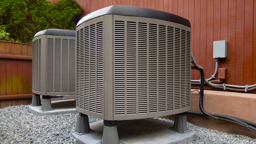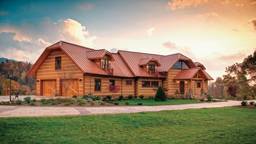
By Wyatt Myers
Log homes have long epitomized comfort and warmth, even on the coldest winter nights. How we heat homes, however, has changed over the years?from classic wood-burning fireplaces to the conventional furnace and ductwork that are so common today.
Furnace-fed heating systems have some flaws that are hard to overcome, such as chilly floors due to rising heat. That's why FlorHeat and several other companies are offering an alternative: radiant in-floor heating.
A Break from Convection
The differences between a conventional forced-air heating system and radiant in-floor heating are night and day. Forced-air's heat is generated by a furnace and piped through the home by ductwork. The heated air enters rooms through vents and then rises?warming the ceiling instead of us. In addition, this air is constantly recirculated through the house, carrying with it a lot of airborne dust and allergens.
Radiant in-floor heating involves coiled tubes that rest just below the floor in your home. Flowing hot water or electricity warms the coils?and, in turn, your floor. The result is heat that warms you from "toe to head." Since the floor is the source of the heat, it also warms everything it touches much more efficiently than a forced-air system.
There are currently two basic kinds of radiant floor heating systems: hydronic and electric. Hydronic systems are used to heat an entire home. Generally, the heat source for the system is a hot water heater or a boiler. "And since water is a more efficient conductor of energy than air, hydronic radiant heat is more efficient than conventional heat," says Don Dornbush.
Electric systems are used only to warm the floor in smaller rooms. Most often installed in a bathroom, the electric system consists of mats embedded with electric heating coils. These systems are not as energy efficient as hydronic systems, but they heat small areas very well and very quickly.
¢ents and $ensibility
One downside to radiant floor heating is the upfront cost. "Prices can range from $3 to $30 per square foot, depending on the job's complexity," says Don Dornbush. "But you can have a reliable radiant system installed in the $5 to $10 per square foot range." That's still roughly twice the cost of a conventional heating system, but experts tell us that prices for radiant heating systems are getting more reasonable.
Despite the initial cost, you may save money in the long run. "By the most conservative estimates, the energy saved by radiant floor heating is 20 to 30 percent over traditional heating technologies," Don adds. "Some projects have shown savings as high as 50 percent." That's good for the environment?and your wallet.











